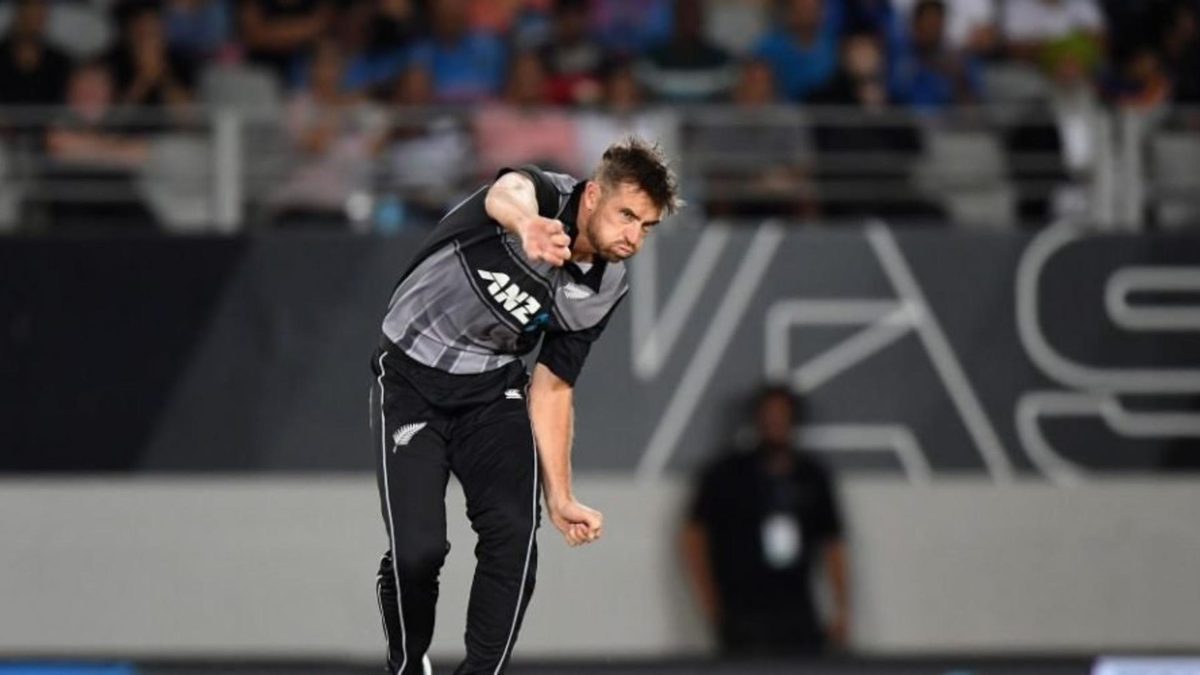
Drop him or keep him, New Zealand must act quickly and decisively on Tim Southees white-ball future.
Tim Southee’s failure to contain the flow of runs or pick up wickets in the first T20I against India was symptomatic of his white-ball decline. His dwindling fortunes present a dilemma for New Zealand cricket.
His spell of 7-33 in Wellington against England in the 2015 World Cup, recently ranked the , was perhaps the defining milestone of the Kiwi bowler’s career. It should have been the launchpad for greater things in limited-overs cricket. Instead, things have spiralled downwards for him since then.
In 52 ODIs since that merry day, he has picked up 59 wickets at an average of 45.25, a significantly worse figure than his overall average of 34.26. In 30 T20Is in the period, he managed 30 wickets at 28.83. Once regarded the leader of New Zealand’s pace attack, his very place in the starting XI now seems insecure.
Tim Southee turns 31 today!
Perhaps his finest spell in a New Zealand shirt?pic.twitter.com/j2yIgtJyHM
— Wisden (@WisdenCricket) December 11, 2019
With the T20 World Cup on the horizon, New Zealand are faced with an important selection call. Do they back Southee’s experience or is it time to move on?
New Zealand have a varied roster of fast bowlers to choose from. Trent Boult has progressed to become the undisputed pack-leader, while Lockie Ferguson has made himself indispensable after a glorious World Cup 2019, where he picked up 21 wickets at 19.48; only Mitchell Starc finished with a better tally. The others jostling for a place are Matt Henry, Blair Tickner and Scott Kuggeleijn, while Hamish Bennett too has cropped up into the debate.
In the first T20I against India, defending an imposing score of 203-5, he should have taken the lead. But, without any swing on offer, his stock delivery was rendered predictable. When he tried to change things up with slower ones, batsmen were able to unfailingly pick those too, perhaps because his relatively low base speed doesn’t leave much room for deception. His four overs were carted away for 48 runs. The last of those, the 19th of the innings was taken for 18, allowing India to complete the chase without much fuss.
It’s not that Southee’s dipping efficiency has gone unnoticed by the New Zealand selectors. After all, he didn’t make it to the starting XI of the New Zealand World Cup side. He played one game, conceded 70 runs from nine overs against England, and was benched again. So is it the end of the line for the seamer?
Not necessarily. In nine T20Is while leading the side in 2019, he picked up nine wickets at 25.22. His economy rate of 7.20 in those games is far lower than the 9.12 it has been while playing under Kane Williamson.
He has also shown himself to be proactive as a leader, has the ability to hit a long ball from lower down the order and is among the best fielders as far as fast bowlers are concerned. All of that makes him an alluring T20I prospect. Perhaps then it is just a case of managing him better, of making him feel secure in his role as a leader of the group even when Williamson holds the reigns as he will during the T20 World Cup.
An absolute beauty from Tim Southee ?pic.twitter.com/E40prWLeGp
— Wisden (@WisdenCricket) December 14, 2019
One way or another, New Zealand would have to assess the situation and make a decisive call if they are to extract the best from one of their finest. They could take one of the two extremes: go all in and give the 31-year-old the confidence that he will play an integral role during the T20 World Cup in Australia in nine month’s time; or let him go and tilt the focus on grooming the other fast bowlers vying for a spot.
Southee remains a key figure in New Zealand’s Test bowling setup. He often produces incisive spells with the swinging cherry. His spell on the second morning of the first Test against England last November set the tone for his side’s victory in the game. and subsequently the series. It was a . Then, in what was a disastrous tour of Australia, he was one of the lone bright spots, picking up 12 wickets from two games, including nine in Perth, before being mysteriously ‘rested’ for the third match.
Southee’s Test form is not worth risking, and while getting dropped from the white-ball setups may hurt his confidence, spending another marquee event from the sidelines may well have a more detrimental impact.








